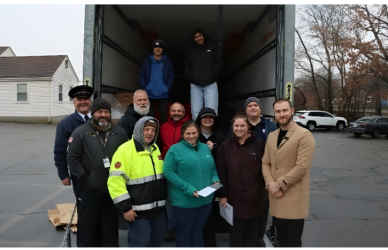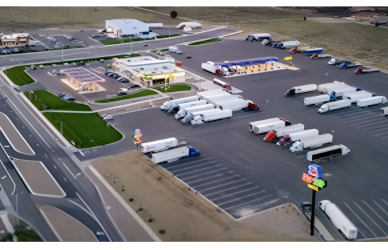America’s highways are the backbone of the nation’s economy, transporting goods across vast distances. While many of us take these interstates for granted, certain routes handle a staggering volume of truck traffic, essential for keeping the country’s supply chains running smoothly. Let’s explore some of the busiest truck routes in the U.S., shedding light on how these highways support the economy.
The Crucial Role of U.S. Interstates in Freight Movement The trucking industry is indispensable, moving 72.5% of the nation’s freight by weight according to the American Trucking Associations (ATA). With millions of trucks traveling daily, specific highways see a significant share of this traffic. Understanding these routes helps us appreciate the logistical challenges and importance of maintaining our infrastructure.
Interstate 40: A Major East-West Freight Corridor Interstate 40 (I-40) stretches over 2,500 miles from Barstow, California, to Wilmington, North Carolina. This interstate is a crucial east-west route for trucking, especially through states like Tennessee and Arkansas, where it sees heavy truck traffic. I-40 is vital for moving goods between the West Coast and the Southeastern U.S., making it one of the country’s key trucking highways.
Interstate 95: The Essential North-South Corridor Interstate 95 (I-95) runs from Miami, Florida, to Houlton, Maine, and is a major artery along the East Coast. Serving major urban centers like New York, Philadelphia, and Washington D.C., I-95 sees a significant volume of truck traffic, particularly in the Northeast. It’s essential for transporting goods along the densely populated Eastern Seaboard.
Interstate 70: The Midwest Connection Interstate 70 (I-70) is an important route for trucks traveling between the East Coast and the Midwest, running from Baltimore, Maryland, to Cove Fort, Utah. The section between Indianapolis, Indiana, and St. Louis, Missouri, is particularly busy, serving as a key corridor for moving goods through the heartland of America.
Interstate 10: The Southern Freight Route Interstate 10 (I-10) is a major transcontinental route from Santa Monica, California, to Jacksonville, Florida. It is especially vital in states like Texas and Louisiana, where it facilitates significant truck traffic moving goods across the southern U.S. I-10 plays a critical role in connecting the western states with the Southeast.
Interstate 80: The Heavyweight Champion Interstate 80 (I-80) is often regarded as one of the busiest interstates for truck traffic in the United States. Running from San Francisco, California, to Teaneck, New Jersey, I-80 serves as a primary route for trucks transporting goods between the Midwest and the East Coast. This interstate sees particularly heavy truck traffic in states like Pennsylvania and Ohio, making it a crucial component of the national freight network.
The Reality of Truck Traffic on Interstate 90 While the blog initially did not mention Interstate 90 (I-90), it’s worth noting that I-90, running from Seattle, Washington, to Boston, Massachusetts, is another significant route for long-haul trucking. It is particularly important for moving goods across the northern states, though it may not see the same volume of truck traffic as I-80 or I-95.
Why Understanding Truck Traffic is Important Knowing which interstates bear the most truck traffic is vital for several reasons:
- Infrastructure Maintenance: High traffic volumes mean more wear and tear on highways, necessitating timely maintenance and upgrades to prevent disruptions.
- Economic Insights: These routes are indicators of economic activity, showing where goods are flowing and how regional economies are interconnected.
- Safety and Efficiency: Managing traffic on these busy routes is crucial for preventing accidents and ensuring efficient transportation of goods.
America’s busiest truck routes are not just highways; they are the arteries through which the nation’s economy circulates. From the cross-country reach of I-80 to the critical north-south corridor of I-95, these interstates are essential for moving goods across the country. As truck traffic continues to increase, the importance of maintaining and upgrading these highways cannot be overstated.











